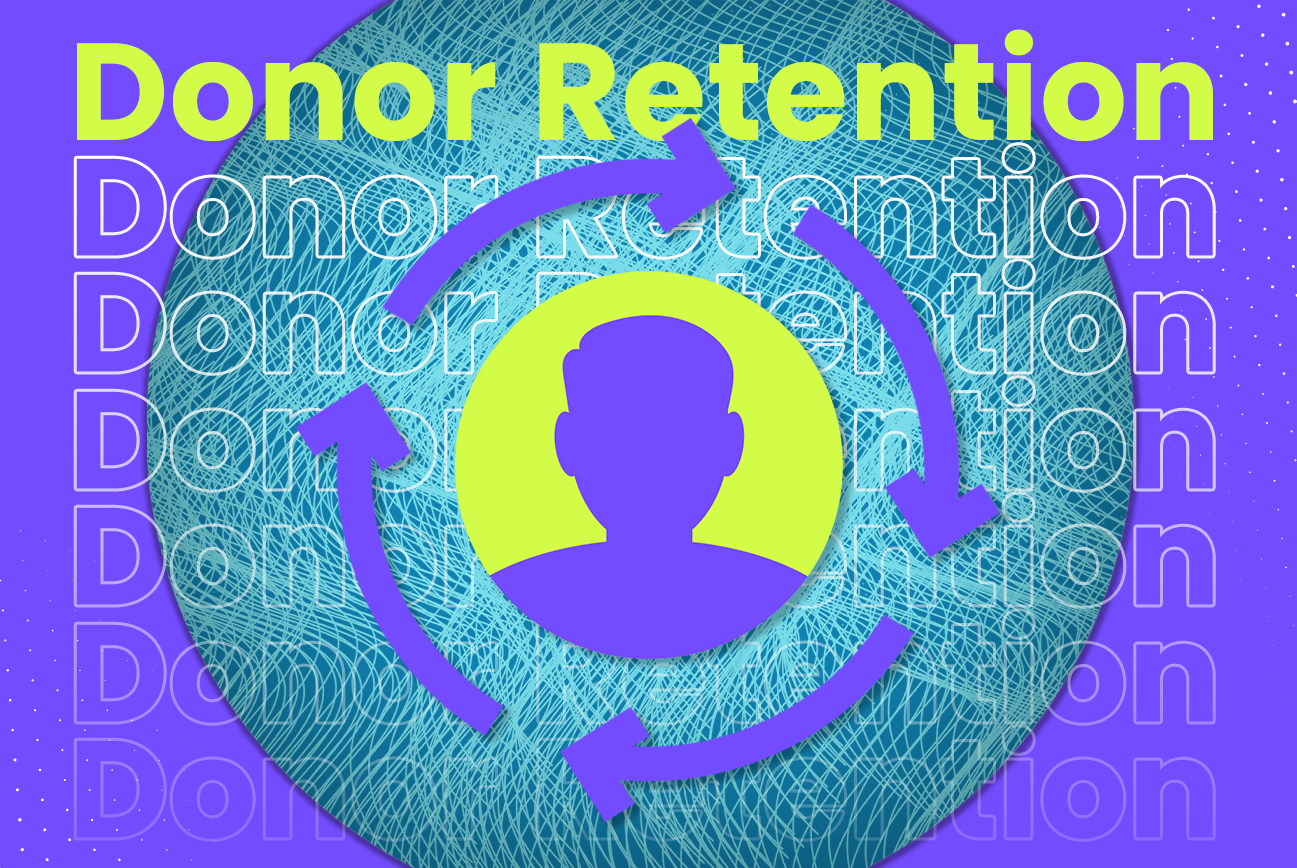Discussions around retention strategies come up every year. And every year, we promise to do more to ensure our donors stick around. Yet, retention rates have not drastically improved.
It’s no secret. Long-term, repeat donors help you raise more money. Yet, the average donor retention rate hovers between 40 and 45 percent. And the Fundraising Effectiveness Project has reported a 4.5 percent decrease in donor retention year-over-year.
And while the solution for every nonprofit might differ, many are struggling to retain donors for similar reasons!
So, does any of the following sound familiar?
Your data stinks.
It’s going to be hard to retain donors and keep them engaged if you don’t have their most recent information. Yet, poor data hygiene continues to be a huge problem for nonprofits!
Your appeals and other communications won’t do any good if you’re sending them to an address your donor no longer lives at. Remembering to let every organization you support know about your address change is usually low on the moving checklist.
So, be proactive about making sure your data is current.
This also means cleaning up your email list and removing anyone who has not engaged with your organization in years.
Poor data hygiene skews your results and makes it harder to analyze what works and what doesn’t.
You won’t know what messages resonate with specific donors or donor groups. You will limit how far you can go with personalized communications. And you won’t be able to adjust your outreach strategically.
LEARN MORE: Are you keeping good data hygiene?

Your stewardship is lacking.
Most organizations have an automated email set up to thank donors for their gifts and provide a receipt after a donation. But if this is all you do to say thank you, you’re simply not doing enough.
An initial automated thank you is important. It lets the donor know that the transaction was processed and you received their donation.
But you will keep struggling to retain donors if you stop there!
You need to follow up several times after someone gives. Send a postcard or video message after that automated email goes out. Show the donor how their money is being put to work to achieve your goals. Use images that demonstrate the impact of your work, and let the donor know they made it possible.
Or better yet, pick up the phone and give donors a call to say thank you! This is especially important for major or new donors who give above your average gift size.
Finally, create an impact report or use your annual report to show donors how continued support helps achieve your goals. And no matter how you reach out, express gratitude for every donation and explain how vital your donors are to your mission.
LEARN MORE: Does your nonprofit need to send better thank you’s?

You don’t leverage recurring giving.
Promoting or launching your monthly giving program can be a great way to improve and raise more money if you’re struggling with donor retention.
Monthly giving programs can enable automatic payment processing each month. All a donor has to do is sign up and enter their payment information once.
But here’s a word of warning: keep an eye on the expiration dates of your donors’ credit cards. You may need to remind them to update their information before they miss a gift. And be clear about the terms so donors aren’t surprised when they see their credit card statement the next month!
You’ll raise 20 percent more from someone giving $20 a month than $200 a year. And your donors can easily manage smaller monthly payments.
So, look closer at a monthly giving program if you’re struggling to retain donors. If you don’t have one, get started by adding the option to make every donation monthly on your online giving page. You can always build a more in-depth program from there.
LEARN MORE: How monthly giving can elevate your fundraising.

All you do is ask.
It’s great to give donors the option to give more frequently with a recurring giving program. But you can’t treat those who don’t enroll like a personal ATM. And that’s exactly how donors feel when they receive one appeal after another.
So, what messages are your donors hearing in between your asks?
We already shared how important it is to demonstrate the impact of every donation. But there’s a lot more you can do.
Start by inviting donors to volunteer. This brings your supporters closer to your work and gives them a way to advance your mission without monetary commitment. And send a donor survey to get a better feel for why they support your organization.
When someone gives to your organization for the first time, send them a donor welcome kit. It’s important to welcome them to your family and make a good impression if you want new donors to stick around.
LEARN MORE: When communications flow, relationships grow!
Now, you see the problem.
You already know that long-term donors are more valuable to your organization than people who make a one-off donation.
But did you know the timing of someone’s second donation can tell you a lot about their long-term value?
According to data from Analytical Ones, a new donor who makes a second gift within three months of their first is twice as valuable long term than someone who gives 10 to 12 months later.
Consider if any of these common reasons explain why your nonprofit is still struggling to retain donors.
And click here if you want to talk through retention strategies with an amplifi team member!









